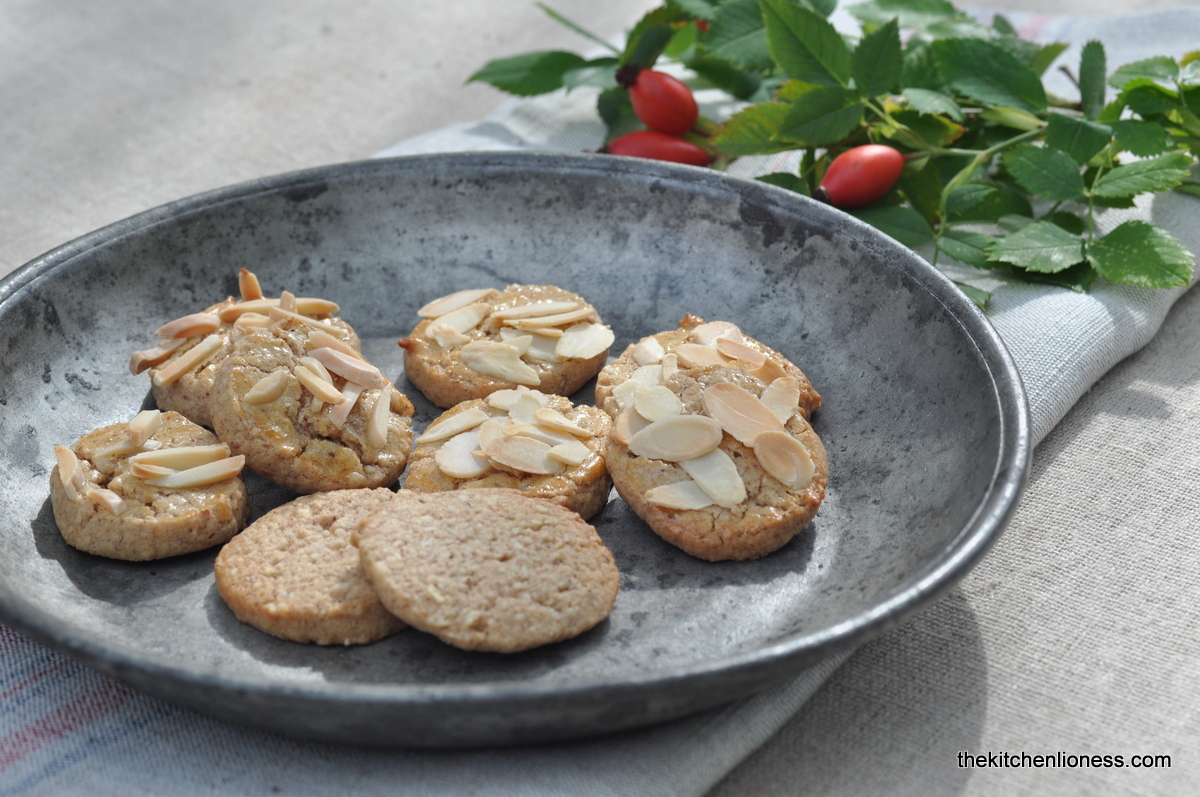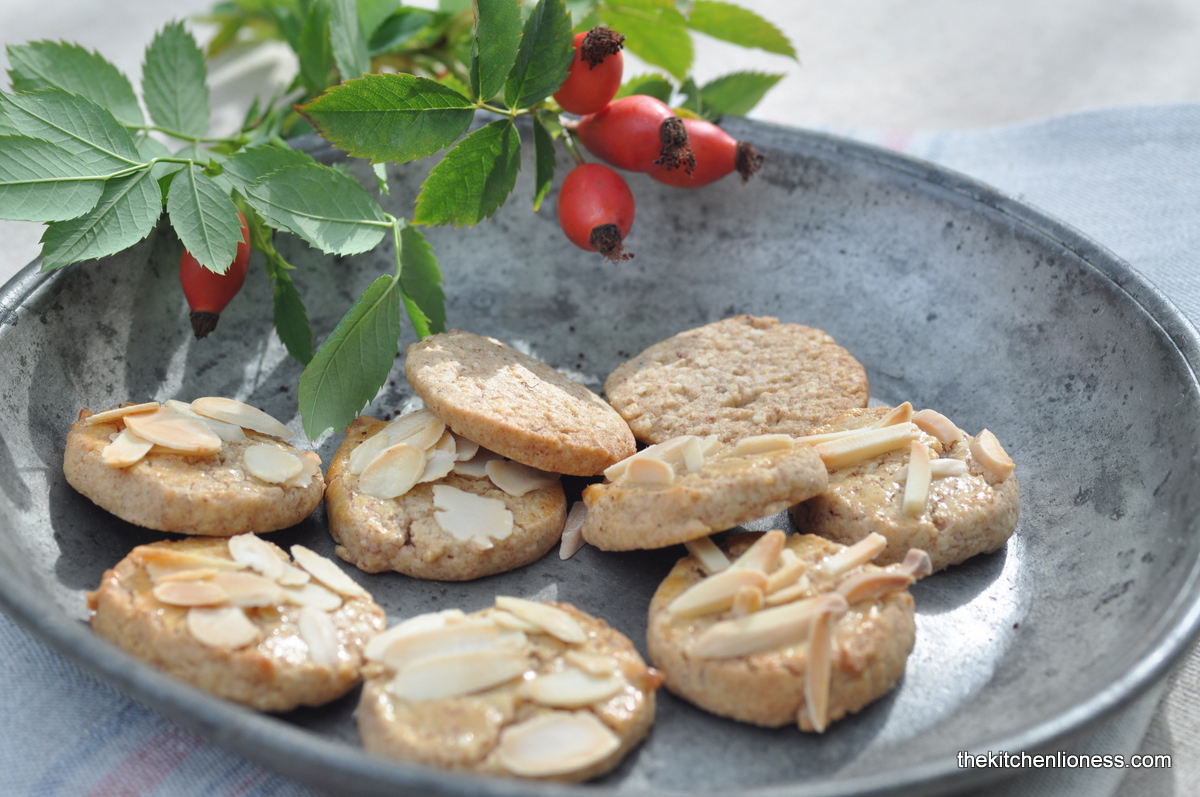St. Hildegard, also called Hildegard of Bingen (Hildegard von Bingen), was born 1098 in Bermersheim (Rhineland Palatinate, Germany) and died on September 17, 1179, in Rupertsberg, near Bingen (also in Rhineland-Palatinate, Germany) at the age of 81. She was canonized on May 10, 2012 and her feast day is today, September 17, the day of her death. She was a German abbess, visionary, mystic, and composer.
Hildegard was born of noble parents (Hildebert and Mechthild von Bermersheim) and was educated at the Benedictine monastery of Disibodenberg (Kloster Disibodenberg) by Jutta von Sponheim, a religious recluse. Hildegard was only 15 years old when she began wearing the Benedictine habit and pursuing a religious life. After Jutta died in 1136, Hildegard succeeded her as prioress. Having experienced visions since she was a child, at age 43 she consulted her confessor, who in turn reported the matter to the archbishop of Mainz. A committee of theologians subsequently confirmed the authenticity of Hildegard’s visions, and a monk was appointed to help her record them in writing. The finished work (Scivias aka Liber scivias 1141–52), consists of 26 of Hildegard's visions that are prophetic and apocalyptic in form and in their treatment of such topics as the church, the relationship between God and humanity, and redemption. After having lived at Disibodenberg for 39 years, in 1147 Hildegard left the Disibodenberg monastery with 18 fellow nuns to found a new convent at Rupertsberg (Kloster Rupertsberg).
Hildegard was also a talented poet and composer, she collected 77 of her lyric poems, each with a musical setting composed by her. Her numerous other writings included lives of saints, two treatises on medicine and natural history, reflecting a quality of scientific observation rare at that period, as well as extensive correspondence. She traveled widely throughout Germany, evangelizing to large groups of people about her visions and religious insights, which earned her the description of a Prophetissa teutonica, a German prophetess. In the year 1165 she founded a second convent, this one accepted women with non-aristocratic background, the Benedictine Abbey of St. Hildegard (Abtei St. Hildegard), a community of Benedictine nuns in Eibingen near Rüdesheim in Hesse, Germany.
Miracles were reported during her life and at her tomb. However, she was not formally canonized until May 10, 2012, when Pope Benedict XVI declared her to be a Saint and later that year (on October 7, 2012) Benedict proclaimed Hildegard a doctor ecclesiae (Kirchenlehrerin) of the church, one of only four women to have been so named.
As one of the few prominent women in medieval church history, Hildegard became the subject of increasing interest in the latter half of the 20th century. Her writings were widely translated into English and several recordings of her music were made available.
Hildegard of Bingen believed food nourished the soul. She recommended having one of her spelt cookies every day to enrich and bring joy. According to Hildegard, these spelt cookies strengthen the nerves and improve the mood. However, due to their high concentration of cinnamon and nutmeg in the original recipe (2 tablespoons each cinnamon and nutmeg), Hildegard recommended consuming them in moderation. Depending on their size, children may eat up to 3 cookies a day, adults may eat 5. However, to accomodate modern tastes, I usually reduce the amount of freshly grated nutmeg and cinnamon used in the original recipe - the cookies still smell and taste like spice cookies, they still contain spelt and almonds and the trinity of spices called for in the traditional recipe but we can be a bit less cautious when enjoying them and still benefit from the nutritial value that spices do have.
Around here, you can even depend on a ready-made organic Hildegard von Bingen spice mix called 'Kuchen und Keks Gewürz' (cake and cookie spice mix) that contains the three spices nutmeg, cinnamon and cloves and, if I may add, comes in a very pretty package which, together with the recipe for the cookies, makes for a formidable gift.
For Hildegard, spelt (Dinkel) soothes the mind, and nutmeg (Muskatnuss) brightens the mood. These two ingredients account for a large part of the positive effects of Hildegard's spelt cookies with spices. The addition of nutmeg has a stimulating effects, due to the essential oil myristicin. In moderate doses, myristicin serves as a mood enhancer but in large quantities it acts as a psychoactive drug, so always use caution when adding nutmeg to your dishes.
Cookies of Joy According to Hildegard von Bingen
recipe adapted from St Hildegard's treatise Liber simplicis medicinae (Buch der einfachen Medizin) aka Physica (Heilkraft der Natur), 1150-58
Ingredients
(yields about 80 cookies, depending on their size)
For the Cookie Dough
- 150g unsalted butter, room temperature
- 200g raw cane sugar, fine (or use soft brown sugar)
- 2 eggs (M), free range or organic (room temperature)
- a pinch of fine sea salt
- 300g spelt flour
- 200g almond flour
- 1 tsp baking powder
- 5g Ceylon cinnamon
- 5g freshly grated nutmeg
- a generous pinch of ground cloves (about 1g)
- grated zest of 1 organic lemon
To Finish
- 1 tbsp milk, full fat
- 1 egg yolk (M), free range or organic
- almonds, slivered or sliced, or both (optional)
Preparation
- In a mixing bowl cream together the butter and sugar. Add eggs and salt, beat well.
- In another bowl whisk together the spelt flour with the almond flour, baking powder, cinnamon, nutmeg, cloves and grated lemon zest.
- Add the butter mixture to the flour mixture and mix just until the dough comes together.
- Wrap the dough in kitchen wrap and let it rest in the refrigerator for about an hour.
- Then take the dough out of the fridge and form logs with the dough, wrap the logs in kitchen wrap and place in the refrigerator again overnight (at least an hour will also work if you are short of time).
- The following day (or after an hour), take the dough logs out of the refrigerator. Line two baking sheets with baking parchment.
- Pre-heat the oven to 180°C (356°F), cut the dough into slices and place on prepared baking sheet.
- Brush with egg wash and sprinkle with almonds (optional).
- Bake for about 12 to 15 minutes or until golden brown.
- Let cool on wire racks.
Nervenkekse nach Hildegard von Bingen
Zutaten
(für ca. 80 Plätzchen, je nach Größe der Kekse)
Für den Teig
- 150g Butter (Zimmertemperatur)
- 200g Rohrzucker
- 2 Eier (M), Bio oder Freiland (Zimmertemperatur)
- eine Prise feines Salz
- 300g Dinkelmehl (Type 630)
- 200g Mandeln (geschält und gemahlen)
- 1 TL Weinstein Backpulver
- 5g Ceylon Zimt, gemahlen
- 5g Muskatnuss, frisch gerieben
- 1 Msp Nelken, gemahlen (zirka 1g)
- Abrieb von ½ Bio-Zitrone
Zum Bestreichen (optional)
- 1 EL Milch
- 1 Eigelb
- Mandeln, gestiftelt oder gehobelt
Zubereitung
- Die Butter schaumig rühren und mit dem Zucker, den Eiern und Salz gut verrühren.
- Das Mehl mit den gemahlenen Mandeln mischen, dann Backpulver, Zimt, Muskatnuss, Nelken und Zitronenabrieb dazu geben und nochmals gut mischen.
- Die Mehlmischung zu der Buttermischung geben und zu einem homogenen Teig verkneten.
- Den Teig in Folie wickeln und im Kühlschrank für etwa 1 Stunde kaltstellen.
- Dann den Teig zu Rollen formen (Durchmesser 4 Zentimeter), die Teigrollen nochmals in Folie wickeln und nochmals kaltstellen, am besten über Nacht.
- Am nächsten Tag den Backofen auf 180°C vorheizen. Zwei Backbleche mit Backpapier belegen.
- Die Teigrollen in 0,5 Zentimeter dicke Scheiben schneiden, auf die vorbereiteten Backbleche legen, mit Milch und verquirltem Eigelb bestreichen, dann wahlweise mit gestiftelten oder gehobelten Mandeln dekorieren.
- Im vorgeheizten Ofen etwa 12 bis 15 Minuten backen oder bis die Kekse goldbraun sind.
- Danach auskühlen lassen und in einem verschließbaren Glas oder Dose aufbewahren.
Please note that this blog post is part of my series for a local/regional radio station, where, throughout the years, I present festive bakes that are closely tied to various holidays and seasons. If you are interested, have a LOOK & LISTEN (in German) HERE.
The various recipes of my series can be found here:
- in January, for Three Kings Day (Dreikönigstag) two kinds of Galette des Rois (Dreikönigskuchen) (HERE)
- for Lent (Fastenzeit) Lenten Soup with Lenten Beugel (Fastenbeugel) (HERE)
- for Good Friday (Karfreitag) the delicious Hot Cross Buns (HERE)
- for Pentecost /Whitsun (Pfingsten) the fun Allgäu Bread Birds (Allgäuer Brotvögel) (HERE)
- for the beginning of the summer vacation, the lovely Sacristains (Almond & Sugar Puff Pastry Sticks) (HERE)
- for St Christopher's Day (St Christophorus), the energy-packed Müsli Power Bars (Müsli Energieriegel) (HERE)
- for Mary's Assumption Day (Mariä Himmelfahrt) my Tear & Share Herb Bread (Kräuterbrot) (HERE)
- for Mary’s Birthday (Mariä Geburt) some very pretty Mary’s Sweet Rolls (Süße Marienküchlein) (HERE)
- for Thanksgiving (Erntedankfest) a delicious and seasonal Thanksgiving Apple Tart with Frangipane (Erntedank Apfeltarte mit Mandelcreme) (HERE)
- for Halloween a Pumpkin Spice Bundt Cake (Kürbis-Gewürzkuchen)
- for St Martin's Day (Martinsfest) the cheerful Sweet Dough Men (Weckmänner) (HERE)
- for St Andrew's Day (Andreastag) a classic Petticoat Tails Shortbread (HERE)
- for Christmas Day (Weihnachten) these Traditional German Gingerbread (Elisenlebkuchen) (HERE)
- for New Year's Eve a New Year's Eve Pretzel (Neujahrsbretzel)
- for Candelmas Day (Mariä Lichtmess) some delightful Navettes de Saint Victor (HERE)
- for Carnival Season (Karneval) these lovely Carnival Doughnuts (Karnevals-Krapfen) (HERE)
- for St Patrick's Day a traditional Irish Brown Soda Bread (Irisches Sodabrot)(HERE)
- for St Joseph's Day a long-forgotten but thankfully re-discovered Sweet Cotton Bread (Baumwollbrot)(HERE)
- for Palm Sunday (Palmsonntag) these very pretty Palm Pretzels (Palmbrezel) (HERE)
- for Easter Sunday (Ostersonntag) an Easter Brunch at Home with Tarte Flambée (Flammkuchen) (HERE)
- for the Month of May (Marienmonat Mai) these elegant Visitandines de Nancy (HERE)
- for Pentecost/Whitsun (Pfingsten) festive Beignets (Heiliggeistkrapfen) (HERE)
- for St John's Day (Johannistag) these sweet St John Cakelettes (Johannisküchlein) (HERE)
- for St Margaret’s Feast Day (Margaretentag)the delightful teacake called St Margaret’s Cake (Margaretenkuchen) (HERE)
- for St Hildegard's feast day these wonderful spice cookies called Cookies of Joy (Nervenkekse)(HERE)
- for Michaelmas (Michaelistag) buttery Sablés du Mont-Saint-Michel (Buttergebäck)(HERE) - more delicious treats to come very soon.












Que buenas especiaditas :-))
ReplyDeleteI love the richness that spelt flour brings to these. It just ins't easily available here - though I need to check online. Hope you are all well and safe.
ReplyDelete